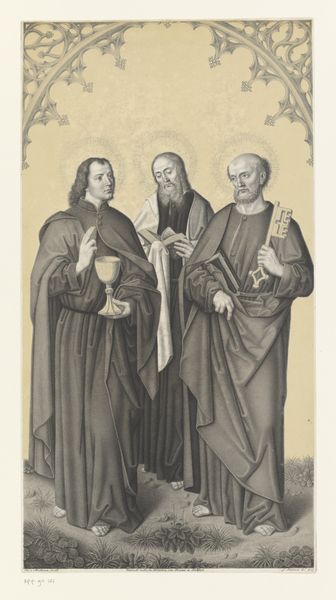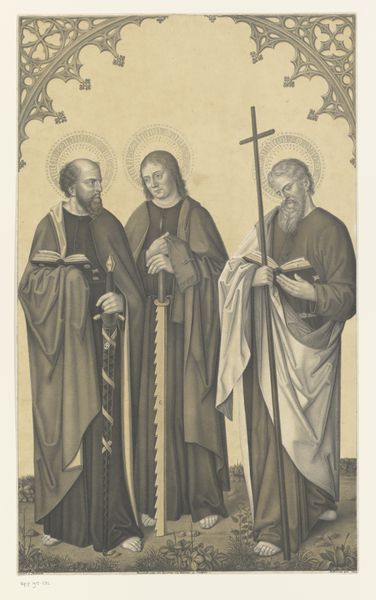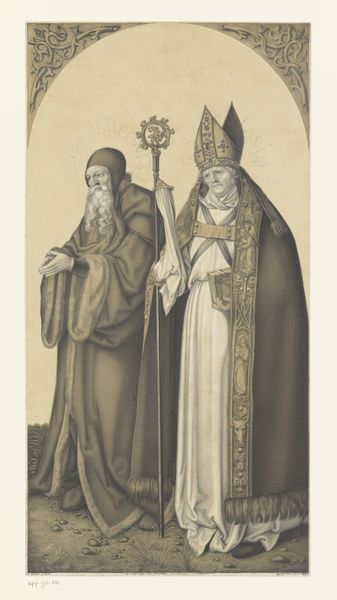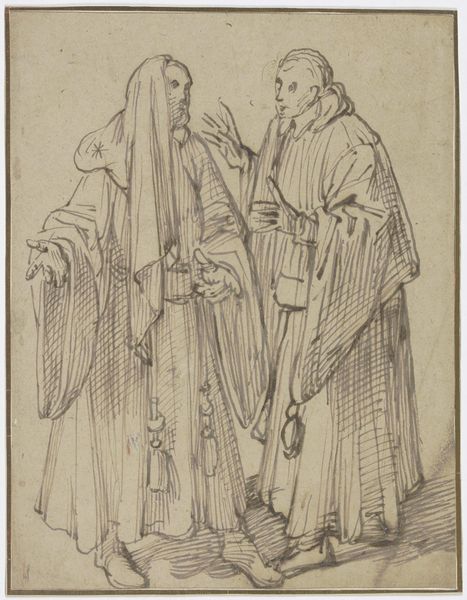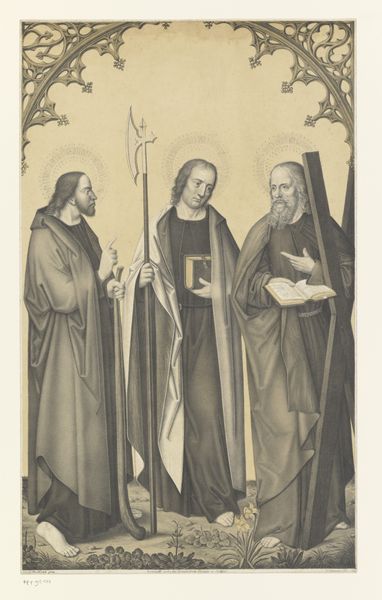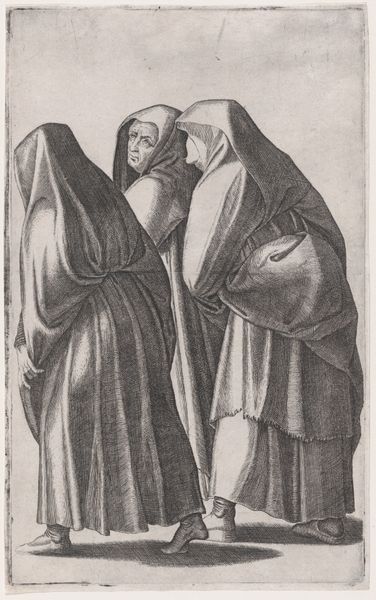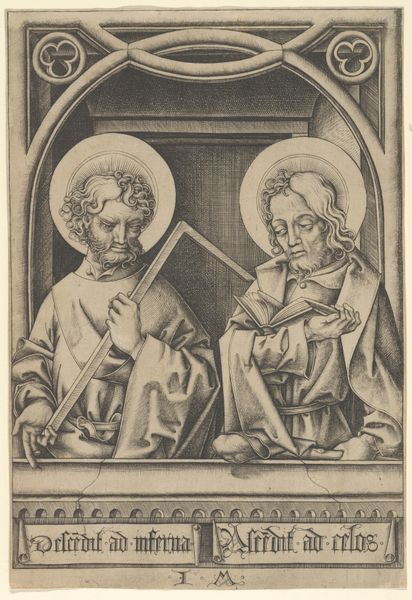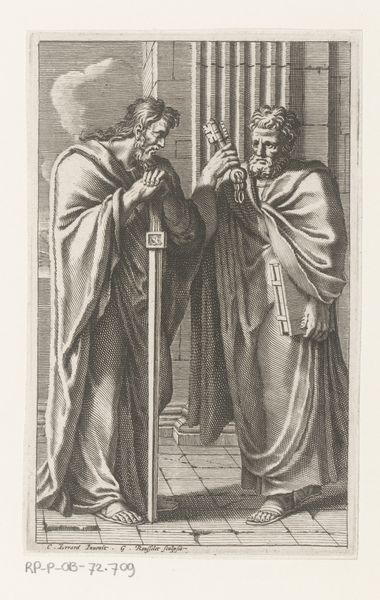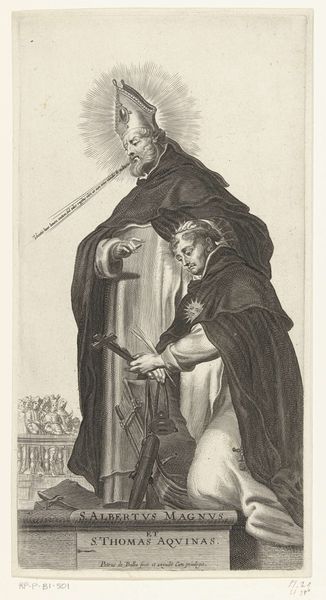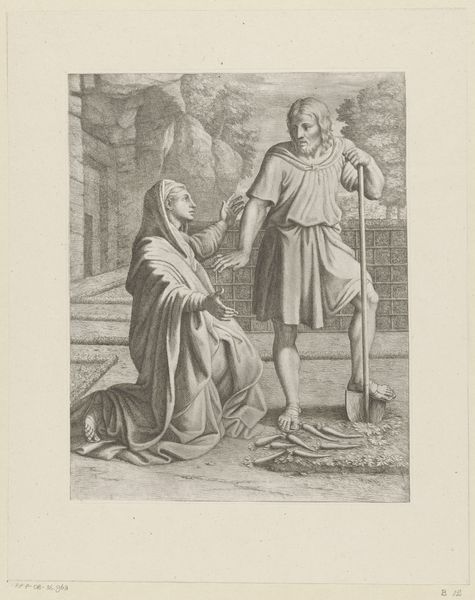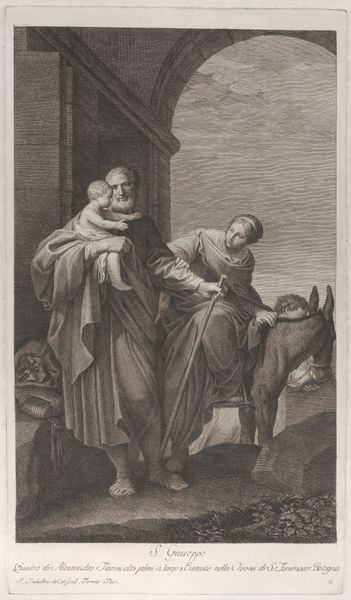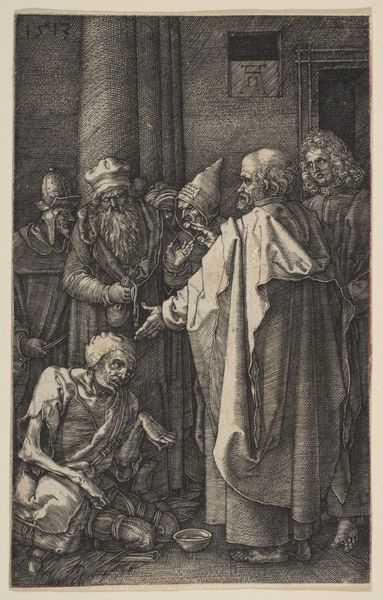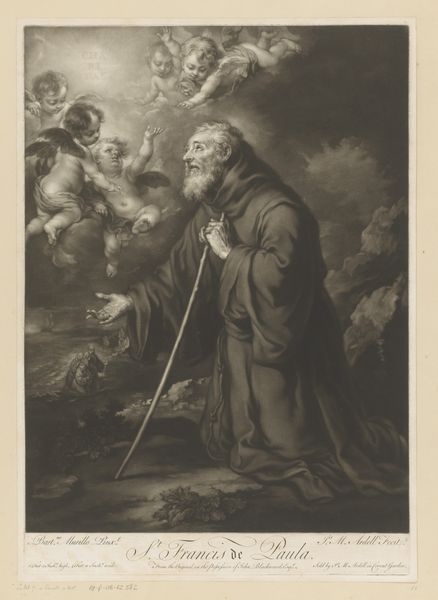
print, engraving
#
portrait
#
medieval
# print
#
figuration
#
line
#
history-painting
#
engraving
Dimensions: height 568 mm, width 292 mm
Copyright: Rijks Museum: Open Domain
Curator: Johann Nepomuk Strixner created this engraving, “Heilige Jozef en Joachim,” in 1824. What strikes you immediately about this rendering? Editor: There’s a stillness to the image that I find rather moving. The soft shading, the gentle curves of their garments…it evokes a sense of quiet contemplation. The limited color palette enhances that mood, doesn't it? Curator: Absolutely. The deliberate choice of representing Joseph and Joachim using line techniques during the early 19th century prompts me to question the then-dominant role of the church. Given that this artwork belongs stylistically to the Medieval art movement, perhaps Strixner subtly critiqued societal norms. Editor: Interesting. But I think focusing too heavily on external symbolism might detract from the more immediate experience. Look at the way their hands are positioned. Joseph’s gesture towards the earth with his staff, compared with Joachim’s open hand—a conversation is suggested, a subtle transfer of authority. Curator: I agree that their posture hints toward a discussion. The history of the artwork could potentially illuminate a larger, more universal story of lineage and tradition. Perhaps Joseph, often relegated to a more supportive, quiet role, takes on increased prominence in discussions about the construction of manhood. Editor: While I agree, their placement within this vertical frame creates a certain tension as their bodies dominate the picture plane. The subtle halos hovering above their heads lend an ethereal quality and draw my attention upward, playing with notions of space. Curator: Indeed, but considering shifts in family structures and the varied roles assigned to the patriarch at this time—don’t you wonder what this might mean within broader discussions of societal shifts and resistance to prevailing ideals of the era? Editor: It seems as though we could both appreciate the details captured within, albeit through unique interpretations. This beautiful and somber scene can surely create thoughtful and personal reflections, from many angles. Curator: And perhaps inspire consideration of evolving ideas relating to gender and cultural expectations. This is more than a medieval image, but something reflecting more contemporary societal norms.
Comments
No comments
Be the first to comment and join the conversation on the ultimate creative platform.
